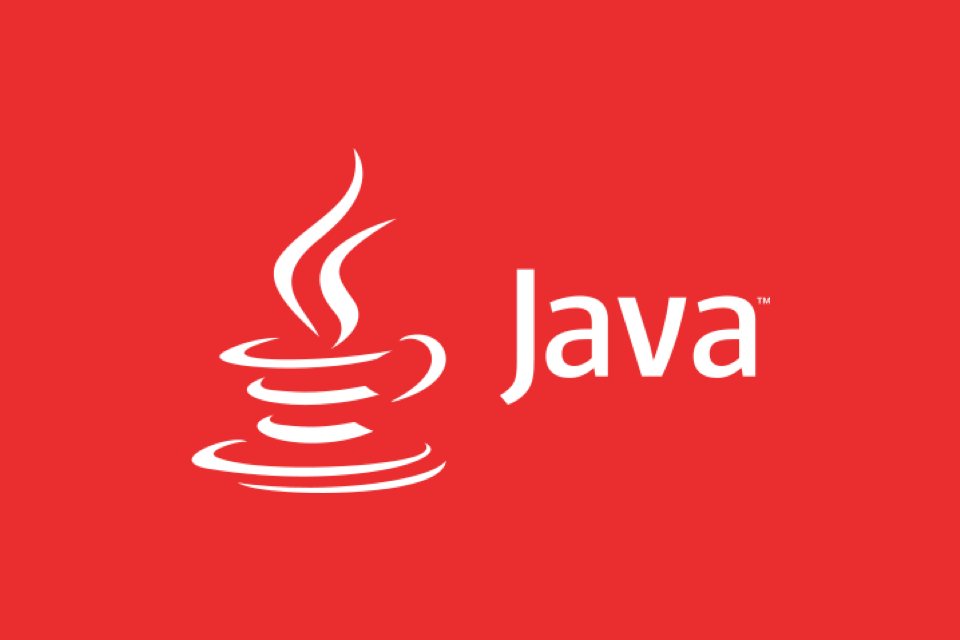Reactive Programming in Java with Project Reactor
Jul 24, 2025 am 02:43 AMProject Reactor is a Java library based on responsive stream specifications used to handle asynchronous data flows. Its core types are Mono and Flux. 1. Use operators such as map, flatMap, and filter for data flow conversion and processing. 2. Control data flow rate through backpressure mechanisms such as onBackpressureBuffer and onBackpressureDrop. 3. Use onErrorResume, onErrorReturn, and retry for error processing. 4. Use subscribeOn and publishOn to realize thread scheduling. 5. It is widely used in microservice asynchronous calls, event-driven architecture, real-time data processing and high concurrency API interfaces. Mastering responsive programming requires moving from imperative thinking to data flow-driven thinking, and ultimately implementing efficient and elegant asynchronous programming.

Reactive programming is becoming increasingly important in modern Java development, especially in handling asynchronous data flow scenarios with high concurrency and low latency. Project Reactor is a Java library based on Reactive Streams, developed and maintained by the Spring team, and is the underlying core of frameworks such as Spring WebFlux and Spring Cloud Gateway.

The following is a quick understanding of how to use Project Reactor for responsive programming in Java.
What is Project Reactor?
Project Reactor is a JVM library for building responsive applications. It implements the Reactive Streams specification, supports backpressure, and provides two core types:

-
Mono<t></t>: represents an asynchronous sequence of 0 or 1 element (such as a single result or an empty result). -
Flux<t></t>: represents an asynchronous data stream (such as sets, event streams, etc.) of 0 to N elements.
They are all lazy : they are executed only when subscribed.
import reactor.core.publisher.Flux;
import reactor.core.publisher.Mono;
Flux.just("Apple", "Banana", "Cherry")
.map(String::toUpperCase)
.filter(s -> s.startsWith("B"))
.subscribe(System.out::println);Output:

BANANA
Core concept: Operators
Reactor provides rich operators to handle data flows, common types include:
- Create classes :
just,fromIterable,range,create - Conversion classes :
map,flatMap,concatMap - Filter class :
filter,take,skip - Error handling :
onErrorReturn,onErrorResume,retry - Thread Scheduling :
publishOn,subscribeOn
Example: flatMap for asynchronous flattening
Flux.just("a", "b", "c")
.flatMap(s -> Mono.just(s.toUpperCase())
.delayElement(Duration.ofMillis(100))) // Simulate asynchronous call.subscribe(System.out::println); In this example, each element is processed asynchronously, flatMap can handle multiple asynchronous tasks concurrently, which is suitable for calling HTTP services or databases.
How does Backpressure work?
In responsive streams, consumers control data flow rates to prevent producers from overwhelming consumers.
For example, you have a high-speed data source (such as a sensor) but the downstream processing is slower. Reactor will automatically "slow down" the upstream through the backpressure mechanism.
Flux.range(1, 1000)
.onBackpressureDrop() // If the downstream cannot process it, discard part of the data.publishOn(Schedulers.boundedElastic())
.doOnNext(i -> {
try { Thread.sleep(10); } catch (InterruptedException e) {}
System.out.println("Processing: " i);
})
.blockLast();Common backpressure strategies:
-
onBackpressureBuffer: cache -
onBackpressureDrop: discard -
onBackpressureLatest: Only the latest one is kept
Error handling: Don't let exceptions interrupt the flow
Exceptions in responsive streams are not automatically thrown and must be handled explicitly.
Mono.error(new RuntimeException("Boom!"))
.onErrorResume(ex -> {
System.err.println("Caught: " ex.getMessage());
return Mono.just("Fallback Value");
})
.subscribe(System.out::println);Output:
Caught: Boom! Fallback Value
Recommended strategies:
-
onErrorResume: Returns an alternative value or alternate stream -
onErrorReturn: simply return the default value -
retry(2): Retry up to 2 times
Thread Scheduling: subscribeOn vs publishOn
-
subscribeOn: Decide where to start execution of the data stream -
publishOn: Decide which thread to execute the subsequent operation
Flux.just("a", "b", "c")
.map(s -> {
System.out.println("Map 1: " Thread.currentThread().getName());
return s.toUpperCase();
})
.publishOn(Schedulers.parallel()) // Switch thread.map(s -> {
System.out.println("Map 2: " Thread.currentThread().getName());
return s "!";
})
.subscribeOn(Schedulers.boundedElastic()) // Start thread.subscribe(System.out::println);
Thread.sleep(1000); // Prevent the main thread from quittingThe output will show that different stages are executed on different threads.
Practical application scenarios
Asynchronous call between microservices
UseWebClientMono/Fluxto call other services non-blocking.Event-driven architecture
Handle event streams in message queues such as Kafka.Real-time data processing
Such as log flow, monitoring metrics, and user behavior flow.High concurrency API interface
ReturnsMono<String>orFlux<User>in Spring WebFlux to improve throughput.
Tips: Debugging responsive streams
Responsive code debugging is difficult, recommended:
Use
.log()to view event streams:flux.log("MyFlux")Use
.checkpoint()to locate the error stack:.flatMap(this::callService) .checkpoint("After calling service")
Basically that's it. Reactor is not complicated, but it needs to change the "imperative" thinking to the "data flow-driven" approach. Once you master it, you will find it very powerful and elegant in handling asynchronous, streaming, high concurrency scenarios.
The above is the detailed content of Reactive Programming in Java with Project Reactor. For more information, please follow other related articles on the PHP Chinese website!

Hot AI Tools

Undress AI Tool
Undress images for free

Undresser.AI Undress
AI-powered app for creating realistic nude photos

AI Clothes Remover
Online AI tool for removing clothes from photos.

Clothoff.io
AI clothes remover

Video Face Swap
Swap faces in any video effortlessly with our completely free AI face swap tool!

Hot Article

Hot Tools

Notepad++7.3.1
Easy-to-use and free code editor

SublimeText3 Chinese version
Chinese version, very easy to use

Zend Studio 13.0.1
Powerful PHP integrated development environment

Dreamweaver CS6
Visual web development tools

SublimeText3 Mac version
God-level code editing software (SublimeText3)
 VSCode settings.json location
Aug 01, 2025 am 06:12 AM
VSCode settings.json location
Aug 01, 2025 am 06:12 AM
The settings.json file is located in the user-level or workspace-level path and is used to customize VSCode settings. 1. User-level path: Windows is C:\Users\\AppData\Roaming\Code\User\settings.json, macOS is /Users//Library/ApplicationSupport/Code/User/settings.json, Linux is /home//.config/Code/User/settings.json; 2. Workspace-level path: .vscode/settings in the project root directory
 How to handle transactions in Java with JDBC?
Aug 02, 2025 pm 12:29 PM
How to handle transactions in Java with JDBC?
Aug 02, 2025 pm 12:29 PM
To correctly handle JDBC transactions, you must first turn off the automatic commit mode, then perform multiple operations, and finally commit or rollback according to the results; 1. Call conn.setAutoCommit(false) to start the transaction; 2. Execute multiple SQL operations, such as INSERT and UPDATE; 3. Call conn.commit() if all operations are successful, and call conn.rollback() if an exception occurs to ensure data consistency; at the same time, try-with-resources should be used to manage resources, properly handle exceptions and close connections to avoid connection leakage; in addition, it is recommended to use connection pools and set save points to achieve partial rollback, and keep transactions as short as possible to improve performance.
 Mastering Dependency Injection in Java with Spring and Guice
Aug 01, 2025 am 05:53 AM
Mastering Dependency Injection in Java with Spring and Guice
Aug 01, 2025 am 05:53 AM
DependencyInjection(DI)isadesignpatternwhereobjectsreceivedependenciesexternally,promotingloosecouplingandeasiertestingthroughconstructor,setter,orfieldinjection.2.SpringFrameworkusesannotationslike@Component,@Service,and@AutowiredwithJava-basedconfi
 Python for Data Engineering ETL
Aug 02, 2025 am 08:48 AM
Python for Data Engineering ETL
Aug 02, 2025 am 08:48 AM
Python is an efficient tool to implement ETL processes. 1. Data extraction: Data can be extracted from databases, APIs, files and other sources through pandas, sqlalchemy, requests and other libraries; 2. Data conversion: Use pandas for cleaning, type conversion, association, aggregation and other operations to ensure data quality and optimize performance; 3. Data loading: Use pandas' to_sql method or cloud platform SDK to write data to the target system, pay attention to writing methods and batch processing; 4. Tool recommendations: Airflow, Dagster, Prefect are used for process scheduling and management, combining log alarms and virtual environments to improve stability and maintainability.
 How to work with Calendar in Java?
Aug 02, 2025 am 02:38 AM
How to work with Calendar in Java?
Aug 02, 2025 am 02:38 AM
Use classes in the java.time package to replace the old Date and Calendar classes; 2. Get the current date and time through LocalDate, LocalDateTime and LocalTime; 3. Create a specific date and time using the of() method; 4. Use the plus/minus method to immutably increase and decrease the time; 5. Use ZonedDateTime and ZoneId to process the time zone; 6. Format and parse date strings through DateTimeFormatter; 7. Use Instant to be compatible with the old date types when necessary; date processing in modern Java should give priority to using java.timeAPI, which provides clear, immutable and linear
 Understanding the Java Virtual Machine (JVM) Internals
Aug 01, 2025 am 06:31 AM
Understanding the Java Virtual Machine (JVM) Internals
Aug 01, 2025 am 06:31 AM
TheJVMenablesJava’s"writeonce,runanywhere"capabilitybyexecutingbytecodethroughfourmaincomponents:1.TheClassLoaderSubsystemloads,links,andinitializes.classfilesusingbootstrap,extension,andapplicationclassloaders,ensuringsecureandlazyclassloa
 Google Chrome cannot open local files
Aug 01, 2025 am 05:24 AM
Google Chrome cannot open local files
Aug 01, 2025 am 05:24 AM
ChromecanopenlocalfileslikeHTMLandPDFsbyusing"Openfile"ordraggingthemintothebrowser;ensuretheaddressstartswithfile:///;2.SecurityrestrictionsblockAJAX,localStorage,andcross-folderaccessonfile://;usealocalserverlikepython-mhttp.server8000tor
 Comparing Java Frameworks: Spring Boot vs Quarkus vs Micronaut
Aug 04, 2025 pm 12:48 PM
Comparing Java Frameworks: Spring Boot vs Quarkus vs Micronaut
Aug 04, 2025 pm 12:48 PM
Pre-formanceTartuptimeMoryusage, Quarkusandmicronautleadduetocompile-Timeprocessingandgraalvsupport, Withquarkusoftenperforminglightbetterine ServerLess scenarios.2.Thyvelopecosyste,






